Hortobágy National Park - the Puszta is located in the Pannonian Plain in eastern Hungary, between the Tisza River and the City of Debrecen. The cultural landscape of Hortobágy - the Puszta consist of a spacious area with grass, wetlands and salty marshlands around the Tisza. The saltiness of the marshlands can probably be explained because the Pannonian Plain, also known as Carpathian Basin, once was a large inland sea. Traditional forms of land use, such as livestock grazing, is practised for more than two centuries. The Hungarian longhorn cows and racka sheep have dominated the Hungarian puszta for centuries. The most important buildings in the plains of the Hortobágy Puszta are the csárdas (provincial inns), stone bridges, shepherd's huts, farmhouses and the typical draw wells. The longest stone bridge in Hungary is located at Hortobágy. Hortobágy National Park was the first Hungarian national park. Hortobágy National Park - the Puszta gained the status as a UNESCO World Heritage in 1999.
www.werelderfgoedfotos.nl © Copyright World Heritage Photos

A typical draw well in the puszta in Hortobágy. Hortobágy National Park - the Puszta, is situated in eastern Hungary. The most important buildings in the plains of the Hortobágy Puszta are the csárdas, the provincial inns, shepherd's huts, farms and typical draw wells. The visitor centre of the national park is situated in the small village of Hortobágy, about 180 km east of Budapest. Hortobágy National Park - the Puszta gained the status as a UNESCO World Heritage in 1999.
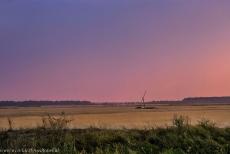
A typical draw well in the puszta in Hortobágy. Hortobágy National Park - the Puszta, is situated in eastern Hungary. The most important buildings in the plains of the Hortobágy Puszta are the csárdas, the provincial inns, shepherd's huts, farms and typical draw wells. The visitor centre of the national park is situated in the small village of Hortobágy, about 180 km east of Budapest. Hortobágy National Park - the Puszta gained the status as a UNESCO World Heritage in 1999.
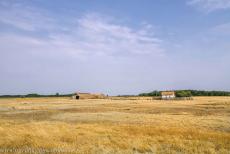
Hortobágy National Park - the Puszta: The Puszta is the largest protected grassland of Europe. The grassy plain is home to an unique flora and fauna, it is an important bird area. Numerous rare bird species nest on the Puszta. In autumn, over 100,000 cranes rest in the Puszta before migrating to Africa. In the 19th century, several fish ponds were created, favorite locations to observe the migratory birds. The crane is the symbol of Hortobágy National Park.
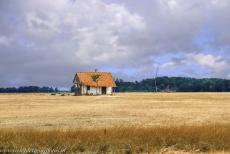
Hortobágy National Park - the Puszta: A shepherd's hut and typical draw well in the Puszta, the driest and sunniest part of Hungary. In 20th century, the agricultural revolution has dramatically changed the landscape of the Hungarian Puszta forever. The preserved parts of the Hortobágy Puszta with its immense steppes, draw wells, farms and shepherd's huts, are only a reminder of an older Hungary. Hortobágy National Park is the first Hungarian national park.
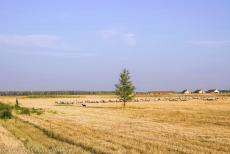
Hortobágy National Park - the Puszta: Shepherds and their sheep dogs still roam the Puszta as they have done for centuries and the traditions of the csikós, the wild Hungarian horseman, still live on in the Puszta. The Hungarian longhorn cows and the racka sheep with their unique spiral shaped horns, have dominated the Hungarian Puszta for several centuries. Przewalski's horses were reintroduced in Hortobágy National Park, there are also attempts to revive the aurochs.
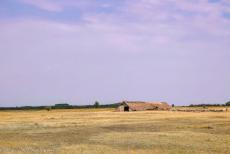
Hortobágy National Park - the Puszta: The cultural landscape of the Hortobágy Puszta consist of a spacious area of grassy plains and unique wetlands around the river Tisza. During the very hot and dry summers, the grass on the Puszta turns brown and yellow. The traditional forms of land use, such as the grazing of livestock, is practised on the Puszta for more than two centuries. The Hortobágy Puszta is one of the most expansive protected landscapes of Hungary.
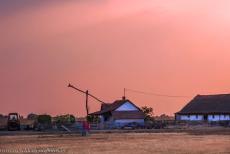
Hortobágy National Park - the Puszta: A beautiful sunset on the Puszta. The Hungarian Puszta is dotted with small farmhouses, shepherd's huts and traditional T-shaped sweep wells, a typical draw well. The T-shaped sweep wells are also called sweep pole wells, the water wells have now become the symbol of the Hungarian Puszta. For centuries, the Hungarian Puszta was used for livestock grazing, but large parts now have been cultivated for agriculture.
